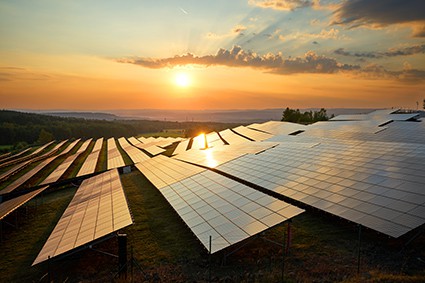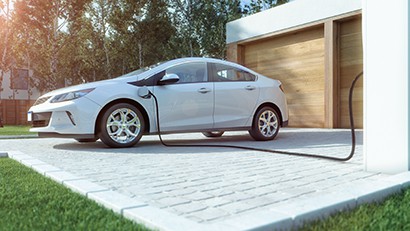
Solar energy is the most abundant renewable energy source that is readily available on planet Earth today.
It is the energy produced by the Sun and cast out as beams of light and heat to all the cosmos. For humans, the uses of solar power to provide electricity and heat are only limited by imagination. One of the facts about solar power is that it can be found being used in every industry and application where any other power source can.
This wide range of applications is the reason there is such a variety of solar power uses that this technology can accommodate.
Advantages of Solar
As a renewable energy source, the solar power facts begin with its being supplied on a massive global scale absolutely free. One of the many uses of solar power is to provide electricity generation as an alternative to the combustion of fossil fuels. A system has excellent longevity because solar power uses no moving parts that friction wears down over time and requires to be replaced in order to still perform. This enables the purchaser to often enjoy the tremendous benefits of owning such a system for many years of consistent returns beyond the already considerable warranty of 25 or more that they carry. The potential of seeing an actual dollar figure in return for supplying the local energy grid with excess kilowatts generated is one of the lesser known beneficial facts about solar power conversion.

Harnessing sunlight is not only good for the pocketbook; it is also very good for the environment upon which people are very dependent. The difference between the carbon footprint of solar as opposed to other energy generation methods is comparing the fabrication process of solar cells to every single stage of fossil fuel use from the ground to the air. This is because fossil fuels are a detriment to the environment at every stage of the process starting with mining them from the Earth, then transporting them to stockpiles where they wait to be transported again to where they are finally burned. Every step uses more fossil fuels to complete it and the last one creates air pollution directly by combusting the material being mined in the first place. As greater advancements are made in the production of solar materials it will ultimately result in more recycled components being used, which will decrease the impact their production has even further.
The solar industry is expanding at an ever growing pace that continues to provide many jobs as it becomes more widely adopted across industries and communities. As it does this, the value to the consumer grows as well because the availability of more efficient technologies benefits every living entity. The current rebates, credits, abatements, and earnable credits for energy production make the choice to go solar more affordable than ever before. Many programs that offer rewards for embracing this energy solution are quickly disappearing, but it is not too late to receive significant reimbursement yet. Now is still a great time to take advantage of the incentives offered, but the close of 2019 will see a lot of opportunities come to an end.
Uses for Solar Power
Electricity that is used by the public grid today is called alternating current (AC,) and direct current (DC) is the kind produced by solar cells.

In order to make it usable for most current technology designs requires the current to be converted by a device known as an inverter. Once this is completed it can run any ordinary household item from an electric furnace to a hairdryer or light fixture. The number of potential applications is endless so long as the Sun continues to shine, and it is expected to for countless eons to come. Some of the most popular uses are powering homes and businesses as well as providing a method for heating and cooling buildings.
One of the most popular trends today is the electric automobile, which requires regular charging of its batteries to perform as intended by the manufacturer. Having a charging station that operates using solar energy would mean keeping this transportation energized with no additional expense. One of the earliest uses of solar cells was by oil rigs to maintain a reliable energy supply to their safety lights. A very common place to find this technology in use every day is on standard household exterior lighting placed along walkways and in the hands of academics using rechargeable calculators. Thermal water heaters are another practice that has been gaining in popularity in recent years, and it does not require any circuitry to yield the benefits of sunlight.
Solar Power Facts
There is a lot to learn about this new technology and just what all it can do. As with many new things there can be a lot of misunderstandings about it. The most important thing people can do, if they are willing to give any consideration to change, is to educate themselves about the topic. Learning what can be accomplished with new developments opens up the future to endless possibilities for improvement and efficient management of resources. Therefore, below you will find a list of facts about solar energy generation that you may not already have known.
Cool Solar Energy Facts:
- Once a solar system is purchased there is no cost to operate it for electricity.
- It is the quietest way of generating power because it is the only one without moving parts.
- It can be configured so that it continues to function even when the main public grid fails.
- With enough cells and batteries, solar energy can power anything nonstop.
- Since first made, the cost of solar panels has dropped from $300/watt to just about $3.
- There are five cities in the US that run entirely on 100% renewable energy.
- Buying solar panels qualifies you for a federal tax credit worth 30% of the total cost.
- An alternative to buying that lowers initial investment is to rent or lease a solar array.
- Be advised that tax credits can only be taken when the system is purchased not financed.
- Although it is best, direct sunlight is not necessary for solar panels to absorb energy.
- No electricity source can be constructed or repaired as rapidly as solar collection systems.
- Emergency outposts in disaster areas are frequently solar powered.
- The largest solar farm in the world covers 1000 acres in the Mojave Desert, California.
- Thermal storage can hold solar energy as heat in stone, earth, water, and molten salts.
- Horticulture makes the greatest use of solar energy by producing food.
- The water cycle is a critical process that would not be possible without solar insulation.
- Solar energy has been used for cooking and washing for more than two millennia.
- Every country on the planet can take steps to be completely supplied by solar energy
People are choosing to change their habits that impact the environment every day, and it is achieving terrific results in lowering the CO2 emissions and fossil fuels consumption. Every person can play a part in reducing the amount of resources wasted in the supply of electrical needs by switching to renewable energies. It is the most sensible choice to make as a living being on this planet if self-preservation is an instinct someone possesses. The positive returns are undeniable as are the drawbacks to not making this kind of transition in the very immediate future. Total conversion to renewable sources for energy production is an inevitability; all that remains is for the world to completely appreciate these gifts.
